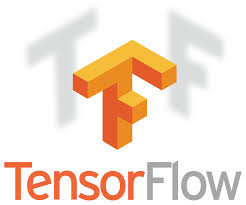class: titlepage .footnote[ N. Makaroff - ENSIIE - 2019 ] .title[How to program Neural Networks.] #### University of Paris-Saclay and ENSIIE,<br/>Applied Mathematics --- layout: true class: animated fadeIn middle numbers .footnote[ Programming Neural Networks - N. Makaroff - ENSIIE - 2019 ] --- class: toc top # Agenda 1. Introduction -- 3. Using Framework -- 1. Tensorflow 1.X and 2.0 -- 2. PyTorch -- 1. mnist Database -- 2. Auto-MPG Database -- --- # Tensorflow * Open-source library developped by __Google Brain__. Used initially only in intern. * Implements automatic learning methods based on deep neural network i.e. Deep Learning. * API python, JS, swift ... * Different level of use. .hcenter.w30[] * Easily put in production. --- # PyTorch .hcenter.w30[] PyTorch is a Python machine learning package based on Torch, which is an open-source machine learning package based on the programming language Lua. PyTorch has two main features: * Tensor computation (like NumPy) with strong GPU acceleration * Automatic differentiation for building and training neural networks __Why Tensorflow then ?__ * Easier for production. * More documentation. * Since Tensorflow 2.0, very easy to use. __Advantages of Pytorch :__ * No need to create the whole graph before running the code. * Many scientific papers written using Pytorch nowadays. --- # Examples __Two examples :__ 1. MNIST Data Base : Classic classification problem. 2. MPG prediction : Simple Regression problem __Your turn :__ * Boston Housing Market --- # MNIST Data Base __The notebook is available here :__ [MNIST](https://github.com/NicolasMakaroff/Tutorials) __Useful library :__ ```python import tensorflow as tf import pandas as pd from matplotlib import pyplot as plt ``` __Get the data :__ ```python mnist = tf.keras.datasets.mnist (x_train, y_train), (x_test, y_test) = mnist.load_data() x_train, x_test = x_train / 255.0, x_test / 255.0 ``` ```python def open_data(file, info = False): """ Open the data and transform it in a DataFrame Arguments : file : CSV to read and convert into a pandas DataFrame info = False : Boolean to get summary information on the created object Output : A pandas DataFrame with all the data from the CSV file """ df = pd.read_csv(file) if info is True : print('Five first rows of the generated DataFrame : \n {}'.format(df.head())) print('\nDataFrame shape : {}\n'.format(df.shape)) return df ``` --- __Split the data between training and test :__ ```python def create_train_test_set(dataframe, train_frac, test_frac): """ Create the train and test set for the training with a random method Arguments : dataframe : pandas DataFrame containing the date to split train_frac : float, fraction number of training data to keep test_frac : float, fraction number of test data to keep Outputs : train_dataset : pandas DataFrame of the training points selected randomly test_dataset : pandas DataFrame of the test points selected randomly """ train_dataset = dataframe.sample(frac = train_frac, random_state = 0) tmp = dataframe.drop(train_dataset.index) test_dataset = tmp.sample(frac = test_frac, random_state = 0) tmp.drop(test_dataset.index) return train_dataset, test_dataset ``` __Gain insight on the data :__ ```python def get_statistics(dataframe, *argv): """ Compute some basic statistics over the data Arguments : dataframe : pandas DataFrame *argv : allows to pass multiple DataFrame in one time Output : None """ print('Statistics Computed : \n {}'.format(dataframe.describe().transpose())) for arg in argv : print(arg.describe().transpose()) ``` --- ```python model = tf.keras.models.Sequential([ tf.keras.layers.Flatten(input_shape=(28, 28)), tf.keras.layers.Dense(128, activation='relu'), tf.keras.layers.Dropout(0.2), tf.keras.layers.Dense(10, activation='softmax') ]) model.compile(optimizer='adam', loss='sparse_categorical_crossentropy', metrics=['accuracy']) ``` __Fit the model :__ ```python model.fit(x_train, y_train, epochs=5) ``` __Evaluate it :__ ```python model.evaluate(x_test, y_test, verbose = 2) ``` --- # MPG __The notebook is available here :__ [Auto-MPG](https://github.com/NicolasMakaroff/Tutorials) --- # Boston Housing Market Fetch the data here : https://www.kaggle.com/vikrishnan/boston-house-prices ```python column_name = ['CRIM','ZN','INDUS','CHAS','NOX','RM','AGE','DIS','RAD' ,'TAX','PTRATIO','B','LSTAT','MEDV'] dataset = pd.read_csv('housing.csv', names=column_names, na_values = "?", comment='\t', sep=" ", skipinitialspace=True) ``` ---